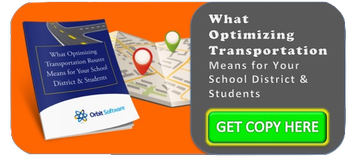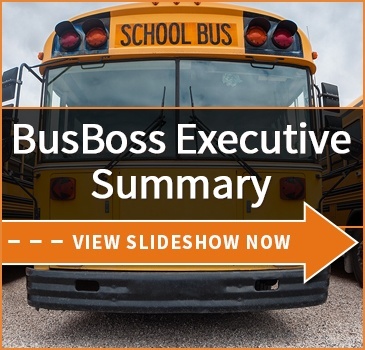8 Ways Schools Can Ensure Students Get on a Bus (And How It Helps Attendance!)
published on March 07, 2014 by Sonia Mastros
school bus management, routing and scheduling software, school bus routing software
When it comes to ensuring your school district receives as much state funding as possible, few ways are better than simply ensuring students are in their seats every morning.
After all, lowered truancy ultimately benefits your school district both through improved attendance reporting, as well as higher test scores!
If your district hasn't yet moved to a centralized and consolidated bus and student data system for management, it may be time to consider one. An affordable software investment can ultimately pay off throughout the school year, through higher attendance and better state returns.
Eight Ways Better Software Puts Your Students On The Bus
1. Better Parent Communication
Getting your students to the bus stop begins with parent communications. The earlier you can inform parents about bus routing, stop locations, and pickup times, the more likely it is they'll be ready on the first day of school.
If you have a central system tracking and coordinating guardian contact information, it's far easier to ensure parents have the info they need, when they need it.
2. Closer Bus Stops
The further away a bus stop is from a student's house, the more likely they won't be there to reach the bus. When bus route maps were made with pushpins and string, stops were placed wherever they could be.
Modern bus routing software, however, can fine-tune bus stop placement and ensure a maximum distance a student will need to walk.
3. Better-Informed Drivers
When you centralize your systems, your bus drivers can receive necessary updates in-cab, through their navigation systems. When they start up the bus in the morning, the nav unit will automatically pull down the most-current routes. This keeps your drivers on the same page from day to day.
4. Up-to-Date Maps
If your city makes changes to the road system, you shouldn't be stuck using outdated maps. Keeping the maps in your system up-to-date means that everyone - from your transportation planner, to your drivers, to your parents - always know where buses should be and which routes they're taking.
5. Adjusting To Special Cases
Not every student's situation is the same, and there are numerous cases where a student might need to be assigned to different buses on different days of the week. For example, special ed students with after-school physical therapy, or children of divorcees with shared custody.
Centralized tracking allows for exceptions to be made whenever necessary, without causing an issue. Students, guardians, and drivers will always be on the same page regarding which buses to take on which days.
6. Bus GPS Tracking
In-cab GPS units on your buses help ensure your students get on the right bus, by ensuring the bus is there in the first place! Rather than leaving your drivers out of contact, or only accessible by voice, you can have a moment-by-moment overview of your buses during every point on their route.
Should be a bus become disabled or involved in an incident, you'll know within seconds. You gain far more time to send services to the bus, and get the students to school on time.
7. RFID Student IDs
In-bus tracking can extend to your students as well! Many school districts are experimenting with RFID-based student ID cards, which can then be used to track and locate a student anywhere that's your responsibility.
So, when a student gets on the bus in the morning, the system will know within moments and have them logged. It can send alerts to drivers, if a student tries to get off at the wrong stop. This just further increases the chances of every scheduled student arriving on the bus in the morning.
Just as one example, when a San Antonio school tried using RFID to improve attendance, they immediately saw a ~2% rise in attendance, and an estimated $1.7 million in additional state funding.
8. Predictive Attendance Tracking
Finally, even with all these different ways of getting students to class, a centralized system can make morning attendance a breeze. When put together, these computerized systems can put together predictive attendance reports for teachers.
If someone managed to vanish between the front doors and class, you'll know immediately and they can be located. Otherwise, a teacher can approve the roll-call with a quick headcount, preventing valuable classtime minutes from being wasted on administration.
More Students In-Class Brings Higher Funding
When so much state funding relies on attendance numbers, your school district should be doing everything possible to get students to class in the morning. By centralizing your bus and student tracking into a single software package, you get the power to guarantee higher attendance, better scores, and higher funding.
To learn more about the possibilities in modern student management systems, just contact Orbit Software for more information!






